A Brief Overview of FDM 3D Printer Supplies
Instead of the foreword
To date, the development of 3D printing technology has made it possible not only the commercial use of 3d printers, but also the acquisition of private individuals for home use. Many Chinese, European and American companies offer a fairly wide range of printers, with prices ranging from several tens of thousands to millions of rubles. I’m sure that not so much time will pass, and 3D printers will appear in almost every home! Already today, many use home 3D printers to effectively translate their ideas into reality.
Today, there are many 3D printing technologies, and you can find a printer for any of your goals, however, the most widely used today is the technology of layer-by-layer application of molten plastic filament (FDM). Such printers can be found almost everywhere, where it says "3D printing". The method is distinguished by relative simplicity and low cost of both printers and their consumables. We’ll talk about supplies for FDM 3D printers below.
Types of materials
Consider what materials we can find today from Russian suppliers:
ABS plastic:
A classic polymer material that you meet every day: Bumpers and car dashboards, cases of many devices, wear-resistant plastic parts are made of.
Being a copolymer of styrene (polystyrene), butadiene (rubber) and acrylonitrile (SAN plastics), it collected all the advantages of these polymers, practically without any drawbacks: it is very strong mechanically, impact-resistant, heat-resistant, resistant to alkali solutions of acids, alcohols, but it is easy to it can be subjected to both mechanical and chemical (treatment with acetone vapors) treatment, it is easily glued with acetone, while forming, in fact, a monolithic structure.
PLA plastic:
Being a new material in the “biodegradability” trend, the material can easily stand on the shelf for several months, or even years, without any signs of decomposition, since it decomposes only at high humidity and high alkalinity, for example, when it enters the soil. Plastic is absolutely safe when absorbed "inside."
Being a polymer of lactic acid, PLA has one very important property: very low shrinkage during printing. It is from PLA plastic that you can print large objects even on cheap Chinese printers. However, PLA plastic also has a flip side to the coin: its low heat resistance leads to the fact that a model that simply warms up in the sun can leak, and low mechanical characteristics (such as strength and impact resistance) make it poorly adapted for any household applications except for decorative ones. High hardness makes it difficult to machine, and chemical treatment has a detrimental effect: almost all solvents lead to cracking, cloudiness and discoloration of the printed part.
HIPS plastic:
Impact-resistant polystyrene is the most common plastic that we use every day in the form of parts for pens, cases, electrical insulation materials. Not possessing such high mechanical properties as ABS, plastic is still called impact-resistant, since, in comparison with ordinary polystyrene, it clearly exceeds it in this indicator. Fragile. The only thing that it is better than ABS plastic is its excellent electrical insulation properties, so if you want to use voltages above 1 kV in your project, HIPS is your material.
PC plastic:
You probably know polycarbonate and every day you have made it as a plastic that looks like glass. It is used in many advertising constructions, it is very lightfast, has good mechanical properties. It is heat-resistant, but, like dignity, heat resistance is also a drawback: printing can be done only at a temperature not lower than 280 degrees, at which it already begins to oxidize.
PMMA:
Polymethylmethacrylate, it is also Plexiglass, it is also known to us since childhood plexiglass. Excellent light transmission makes this material good for printing various decorative products and crafts, but there are several drawbacks: the plastic warps from the temperature, and over time its transparency decreases, and the color becomes closer to brown.
Nylon:
Nylon is a beautiful, well-established fabric elastic material. Excellent electrical insulation and decent mechanical properties, its own, characteristic only for nylon, color and texture. Printing with nylon is not easy, but the models have, in addition to all the listed advantages, low friction, so it is even possible to make slip bushings from it. But there is one thing: it is very expensive.
Manufacturers
Today, plastic can be purchased directly from three Russian manufacturers:
- Rec ;
- SEM ;
- BestFilament .
I can not say with full certainty that I mentioned all the Russian manufacturers, however, these three companies occupy definitely the vast majority of the retail plastic market in Russia.
Two of the most widespread Chinese known in Russia:
- PP3DP ;
- ESUN .
-PP3DP.As a manufacturer of enclosed printers UP! Apparently, PP3DP is aimed at achieving maximum print quality on their printers, and the yield and heat resistance indices are selected so as to achieve maximum quality only on UP! Printers, and the printers themselves print in one mode: maximum print quality with PP3DP plastic.
- ESUN. ESUN plastic is widely distributed in Russia; almost the entire thread under the name of the country of origin of manufacture “china” is sold under the ESUN trademark.
What about quality? With fairly attractive prices, plastic (if ordered directly from China) ESUN is not so bad! At first glance, you can’t say that he is “typical China”:
- the plastic smells a bit like a “burnt bottle”, but slightly (there is some likelihood that recycled materials are used).
- The layers lie fairly evenly, the places where the thread is broken do not occur often,
- On average, once the nozzle is clogged with small foreign matter, but failures due to “crooked hands”, at least for me, happen much more often!
- the diameter of the thread is stable, within 1.72-1, 77 mm, however, I personally threw out two almost empty spools (about 300 grams remained), one because of the characteristic lack of color, the second because the diameter of the thread began to break all records! (up to 2.2 mm!). and scored the nozzle.
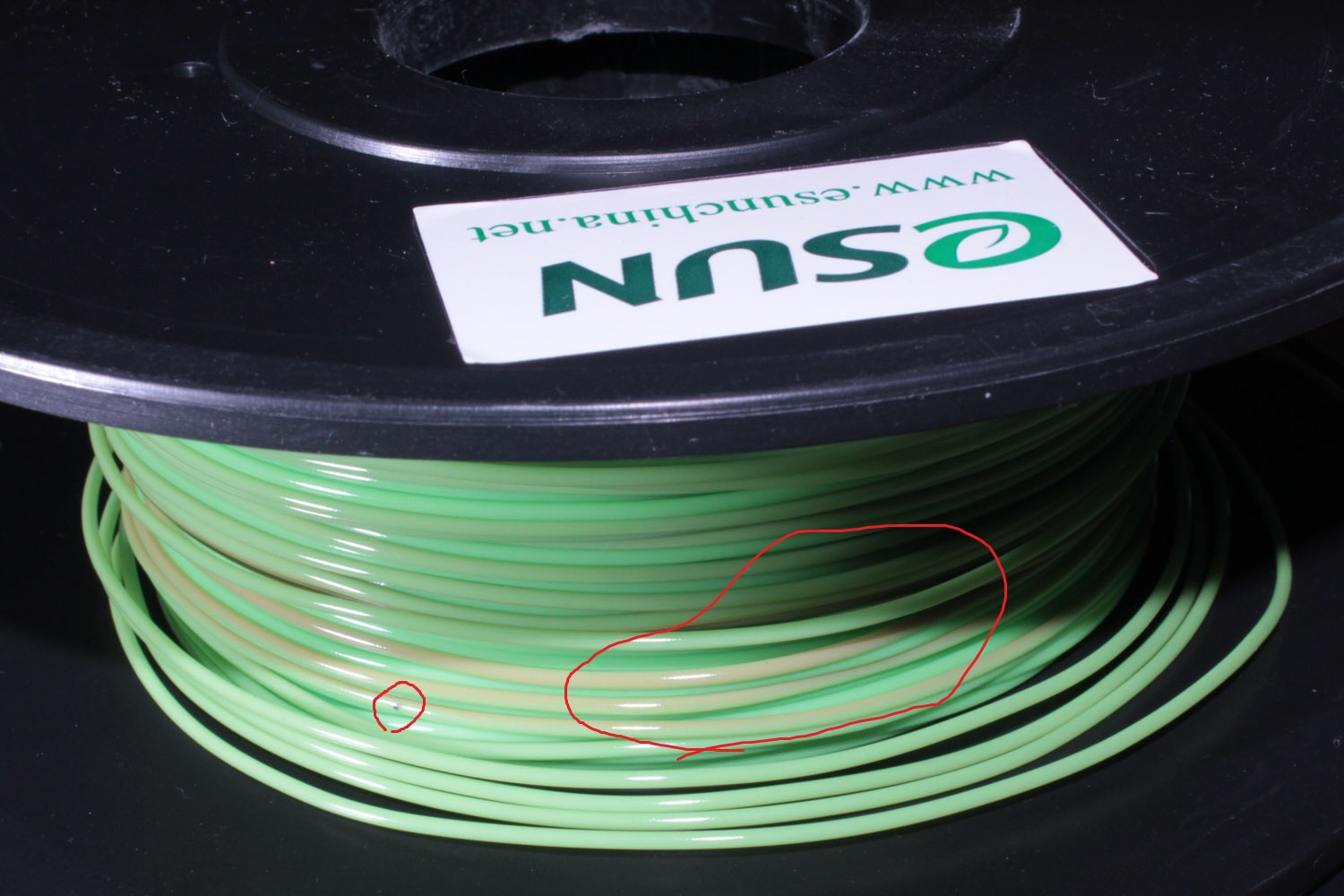
In support of my words, I photographed (sorry, on an iPhone) the procedure for measuring the diameter:
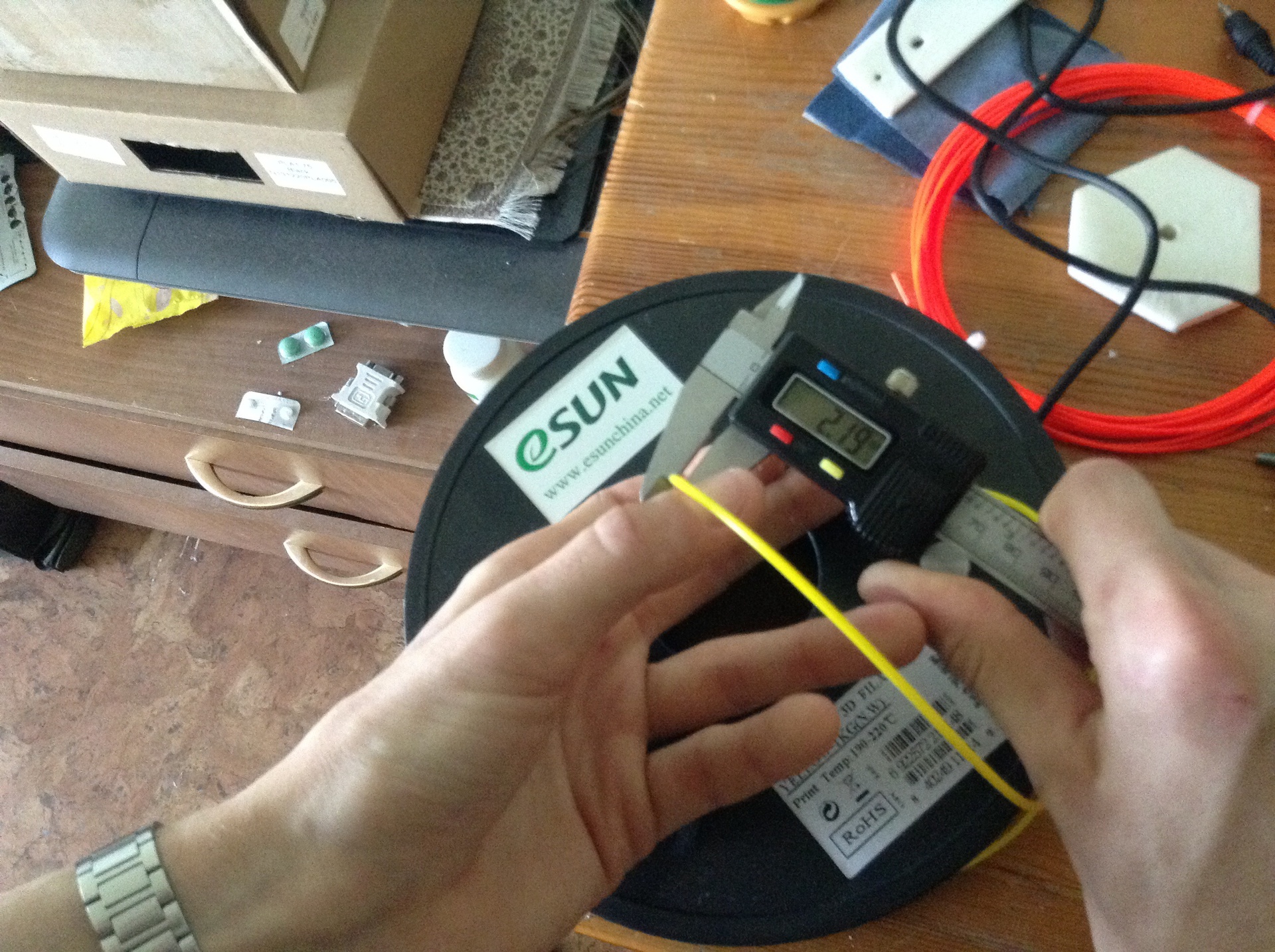
Of course, it is cheaper to buy plastic directly in China, but it will go from there accordingly, as well as from Russian suppliers (obviously, almost 2 times more expensive), of which there are a great many today.
And, most importantly, virtually all types of threads can be purchased from ESUN. Not just everything you know, but just everything. Their range is unusually rich, cunning Chinese do not sit idly by and constantly come up with new types of plastics, among them fluorescent, fluorescent and hips and abs and ... anything! Plastics for every taste and budget.
-REC.When you visit the REC site, you should pay attention to how well it is done: you are greeted by a huge logo symbolizing 3D printing, all buttons are highlighted, an abundance of scripts makes navigating the site convenient and simple. Together with a beautifully designed box, an impression is created of a large Russian manufacturer of high-quality material but ... This impression disappears immediately after the first press, because the only, in fact, lack of this plastic ruins all its advantages. I'm talking, of course, about the diameter of the thread.
The diameter ranges from 1.60 to 1.88 mm, which means that on nothing but the cheapest RepRap printers, this plastic will not print quality. In the Replicator 2 printer, for example, a bar with a thickness of more than 1.82 mm will not pass physically, and a bar with a thickness of 1.65 will not be caught by the feed mechanism. The feed mechanism can be improved, but is it just the alteration of your own printer, stuck bar and uneven layers that you expect from a truly high-quality bar? I doubt it.
And, in order not to be unfounded:
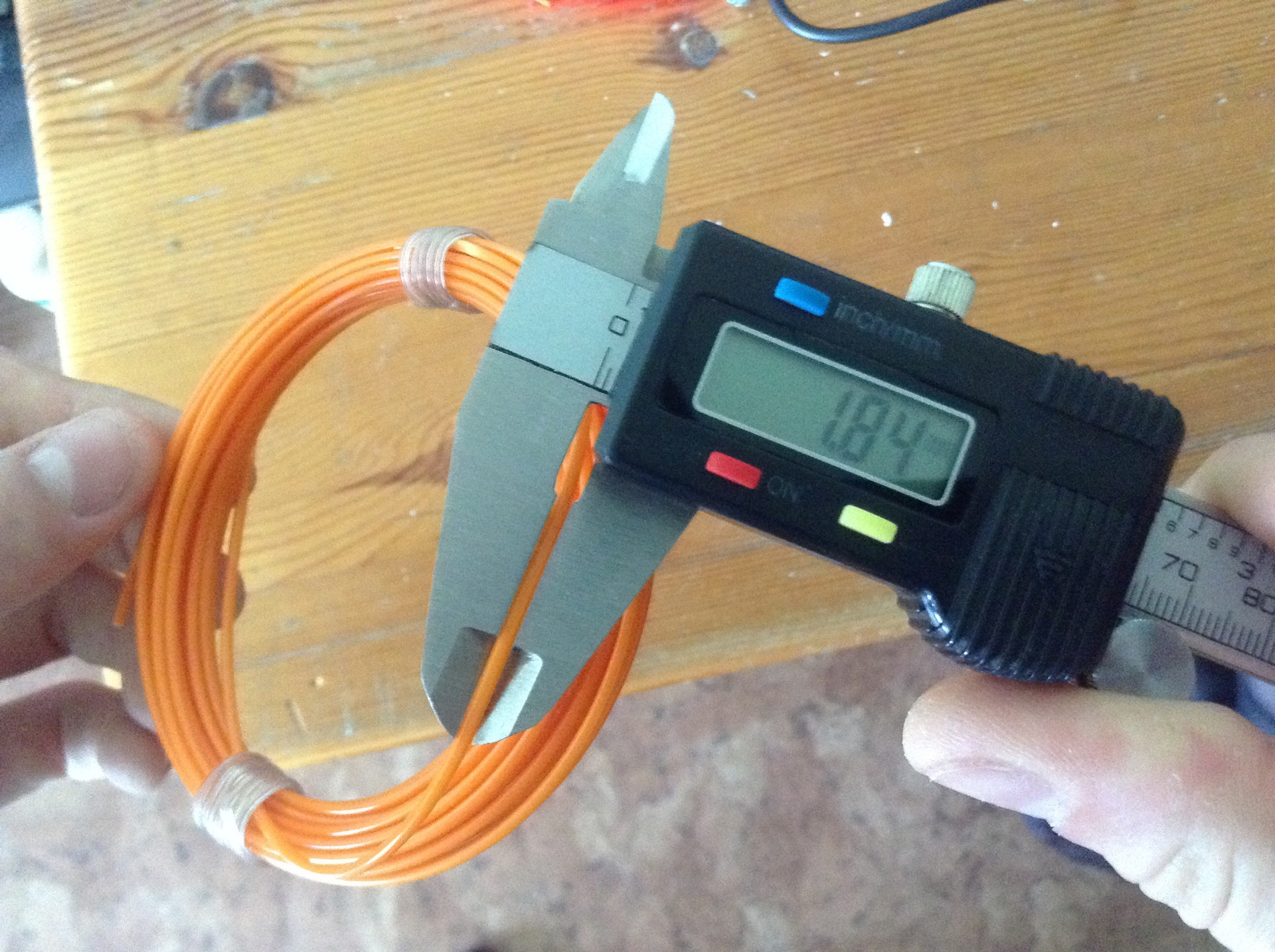
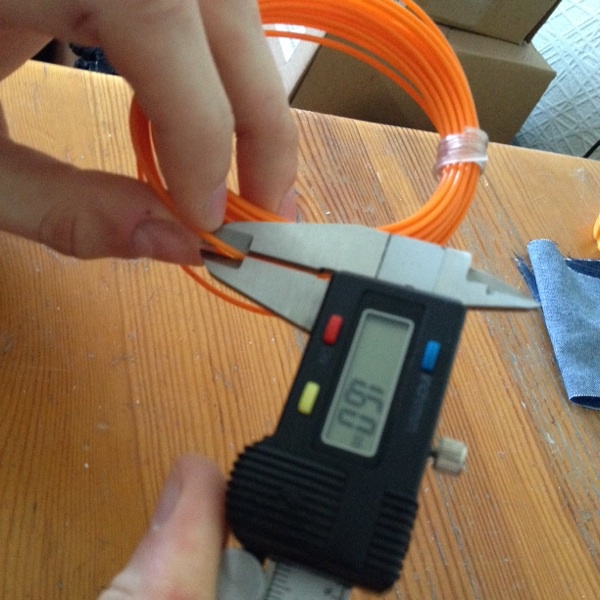
Otherwise, when a more or less uniform section of the thread comes across, the REC plastic behaves well, though the nozzle clogs more often than ESUN. It does not have a strong smell of burnt plastic, unlike a Chinese product.
Another interesting point that pleases the eye on the REC website is the product certificate and technical specifications. With a certificate, the company submits a letter stating that this type of product is not subject to certification. Specifications are written by the company itself, which allows it to do anything and sell it as a thread for 3D printing.
-SEM. The company's website provides extremely scarce information about its products, but some interesting information on polymers is presented. Although there are problems with the diameter of the bar, they affect the print quality only slightly.
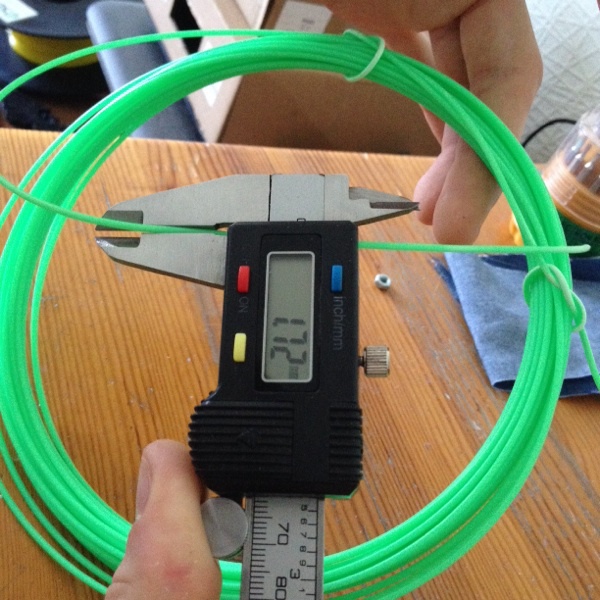
So this plastic can be used for printing on fairly expensive machines. The packaging is simple, without frills, the coil is wrapped in stretch film. In general, the packaging gives away “scribble”, but are we really after the packaging? The range of materials presented is wide: Polycarbonate, HIPS, TPE plastics, all materials print, I did not find any problems with the diameter. There is almost no smell when printing.
As for ABS, plastic with a small amount of foreign inclusions that rarely clog the nozzle. Many different colors are presented. It is most convenient for them to print at temperatures above 250 degrees.
I’ll make a reservation about one point: all Russian manufacturers use the same coils, but, for some reason, a kilogram breaks on it at SEM, while for REC and BestFilament - 750 grams.
-BestFilament.The last, but not least, plastic manufacturer that we will look at today. Unlike the other two Russians, he is not in Moscow, plastic is made by severe guys from Siberia from the city of Tomsk (a bear is not included in the kit). The site is represented by a long sheet of goods, which is not very convenient, but quite acceptable. They do not have a detailed description of plastic, because apparently counting on a familiar audience.
The company sells only ABS and PLA plastics in coils of 750 grams. The plastic is pretty well packaged, the reel is additionally packed in shrink PVC film. What pleased us is that the plastic almost does not smell, unlike the Chinese one. The diameter is stable: 1.72-1.77, which can also be called a necessary minimum for printing on good printers.
The print temperature of ABS plastic is not too high, compared to SEM, which allows you to slightly reduce heat shrink (due to the smaller temperature difference).
In general, for production in Siberia - a very worthy product.
And a traditional photo:
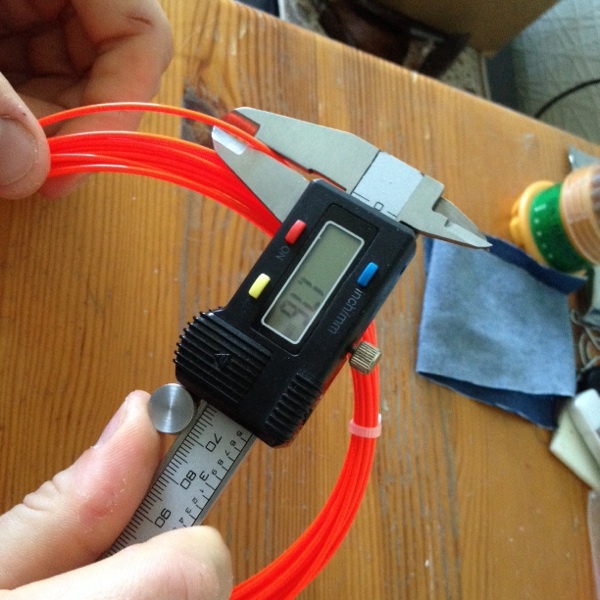
A little about prices
Today, a bar for printing can be purchased if not at every corner, then at least a few dozen specialized online stores. The price tag varies within a fairly wide range, but, not surprisingly, the manufacturer is cheaper. All three manufacturers sell their plastic at retail through official sites, ordering from a single coil.
As of July 2014, the situation with cents is as follows:
ESUN (Aliexpress) ~ 800 rubles / kg;
REC ~ 1000 rub / 750 g (Price from authorized dealers );
BestFilament ~ 750 rub / 750 g (order directly on the site or through Vkontakte );
SEM ~ 1100 rub / 1000 g (order on the website or through Vkontakte ).
Instead of a conclusion
The 3D printing market today is one of the fastest growing markets, so we hope that consumables will become cheaper every day, and their quality will grow exponentially.
Well, we wish good luck to Russian manufacturers, because fighting China is not an easy task.
